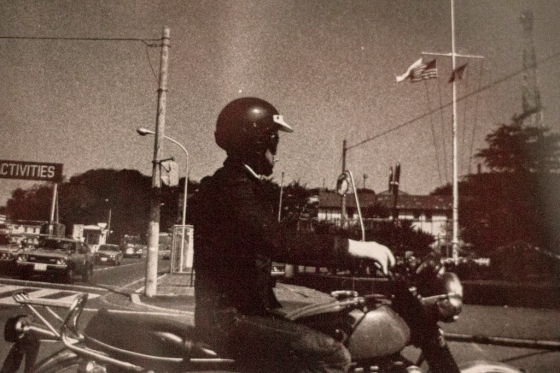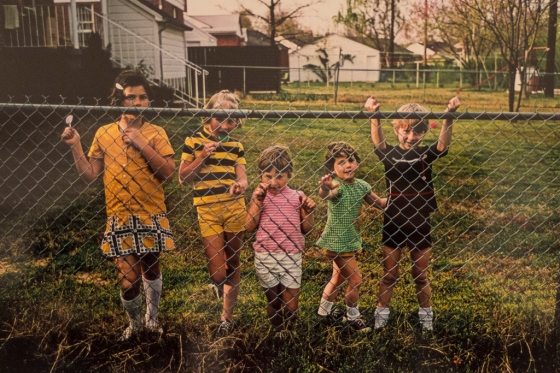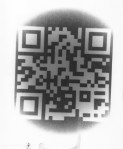“How do we invent our lives out of a limited range of possibilities, and how are our lives invented for us by those in power?” As I have already suggested, if these questions are asked only within the institutional boundaries of elite culture, only within the “art world,” then the answers will be merely academic. Given a certain poverty of means, this art aims toward a wider audience, and toward considerations of concrete social transformation.
Monthly Archives: December 2013
QR Code ABC
The QR code system was invented in 1994 by Toyota‘s subsidiary, Denso Wave. Its purpose was to track vehicles during manufacture; it was designed to allow high-speed component scanning. Although initially used for tracking parts in vehicle manufacturing, QR codes now are used in a much broader context, including both commercial tracking applications and convenience-oriented applications aimed at mobile phone users (termed mobile tagging). QR codes may be used to display text to the user, to add a vCard contact to the user’s device, to open a Uniform Resource Identifier (URI), or to compose an e-mail or text message. Users can generate and print their own QR codes for others to scan and use by visiting one of several paid and free QR code generating sites or apps. It has since become one of the most-used types of two-dimensional barcode.
My aim in this is to produce a QR code ABC but not in the standard sense. This code will be produced digitally then printed on to OHP transparencies. After this they will be reproduced in the dark room using traditional methods of silver based developing, using the transparency as a negative and making a darkroom print. Once ready I will scan the darkroom prints back to digital files and present as an A3 Print using Photoshop to stich everything together.
I think this idea is pretty cool as it’s taking the alphabet, which is thousands of years old. Making it 21st century digital reproducing the digital version with 19th century analogue methods, then turn it back to digital thus completing a full circle photographic reproduction.
Below you will see my first time experiment from producing a QR code from an online QR code generator, printing it on plain paper. I then took this print to the darkroom and using an enlarger reproduce a darkroom print using traditional darkroom methods and chemicals. I have added examples of these prints alongside test strips I made to get the exposer time correct.
I wanted to keep the darkroom prints nice and clean but I could not achieve this, because the QR code was printed on to paper and that was making the whites very grey. This is nothing that I had envisaged in my head, I want clean blacks and whites so my next step is to use OHP transparencies.
To get an all-round good first exposure I tested at 2 seconds’ intervals and opted finally for and overall 3 second exposer.
Tate Modern
This week I have had a trip down to the Tate Modern Gallery in London, It was part of my Photographic HND course I am doing. As a group of students we where tasked with searching out primary research and inspiration for our own work. It was interesting to look at so much art work and if we couldn’t find inspiration here I don’t know where we could, some of the installation work I found went over my head but other pieces literally gave me goose bumps.My style of photography tends to lead me down the documentary portrait style and I was pleased to see a selection of work from Miyako Ishiuchi and William Eggleston.
Two images from Miyako Ishiuchi’s collection Yokosuka Story 1977 and are Photographs on gelatine silver print paper.


These two images are from William Egglestons collection From Chromes 1970-73. Photographs, dye transfer print on paper


Both these photographer appeal to me as the images are very simple but both convey life at the time they were taken, especially Willaim Eggleston all of the subjects in this collection of prints looks very personable. To me these images are beautifully natural even they are all clearly posed. When I shoot I normally shoot black and white as that is my thing but I do really love early colour prints but to me colour photography is like looking at someone else’s sandwich, theirs always looks better than whats in your lunch box. But even with todays printing technologies the prints will never compete, older original prints will always be more alive and feel more tactile in my opinion.
While I was down in London it would of been rude not partake in some personal photography of my own, so when I had an opportunity to get my camera out and below is the images I got.
The heart of Harlem
 : Brilliant images capture the color and vibrancy of New York City’s world-famous suburb
: Brilliant images capture the color and vibrancy of New York City’s world-famous suburb
Read more: http://www.dailymail.co.uk/news/article-2516789/The-heart-Harlem-Captivating-photographs-New-York-Citys-vibrant-suburbs.html#ixzz2mM5Ojj6Z
Follow us: @MailOnline on Twitter | DailyMail on Facebook
The most astonishing pictures of 2013
 : Reuters releases its best photographs of the year
: Reuters releases its best photographs of the year
- President Barack Obama’s second-term inauguration and Washington’s Capitol Hill shooting
- Kenya’s Westgate Mall massacre and Asiana Airlines plane crash
- Vladamir Putin, Edward Snowden and Julian Assange
- India’s bus gang rape case, Myanmar prostests and Bali’s New Years ritual
- The new pope, Britain’s royal baby
- The on-going Syrian war, freedom fighters, chemical weapons
- Destructive winter storms and deadly fires
- Miley Cyrus twerking, grafitti artist Banksy and death of The Sopranos actor, James Gandolfini
- Tennis championships, NFL and soccer matches
Read more: http://www.dailymail.co.uk/news/article-2516663/The-astonishing-pictures-2013-Renowned-news-agency-releases-best-photographs-defining-moments-year.html#ixzz2mM3nZM5W
Follow us: @MailOnline on Twitter | DailyMail on Facebook

















